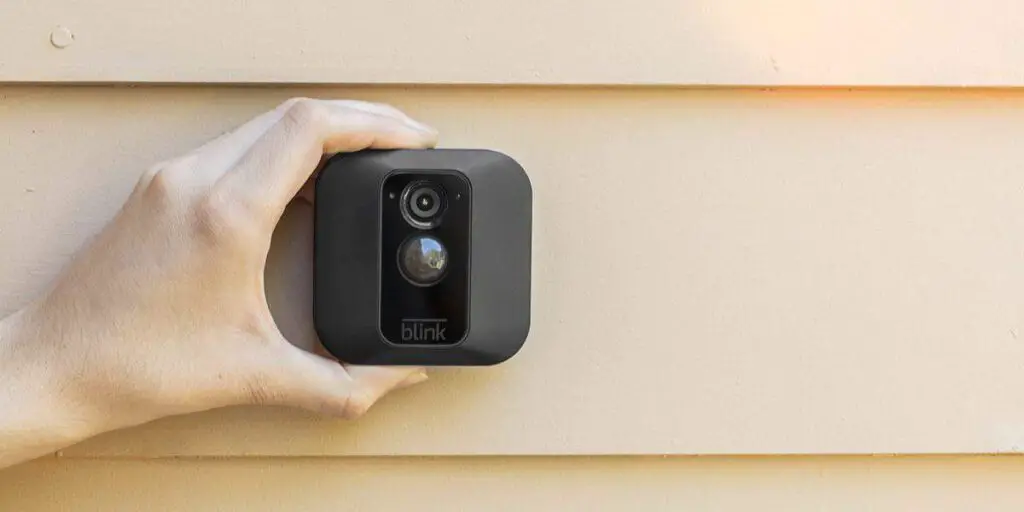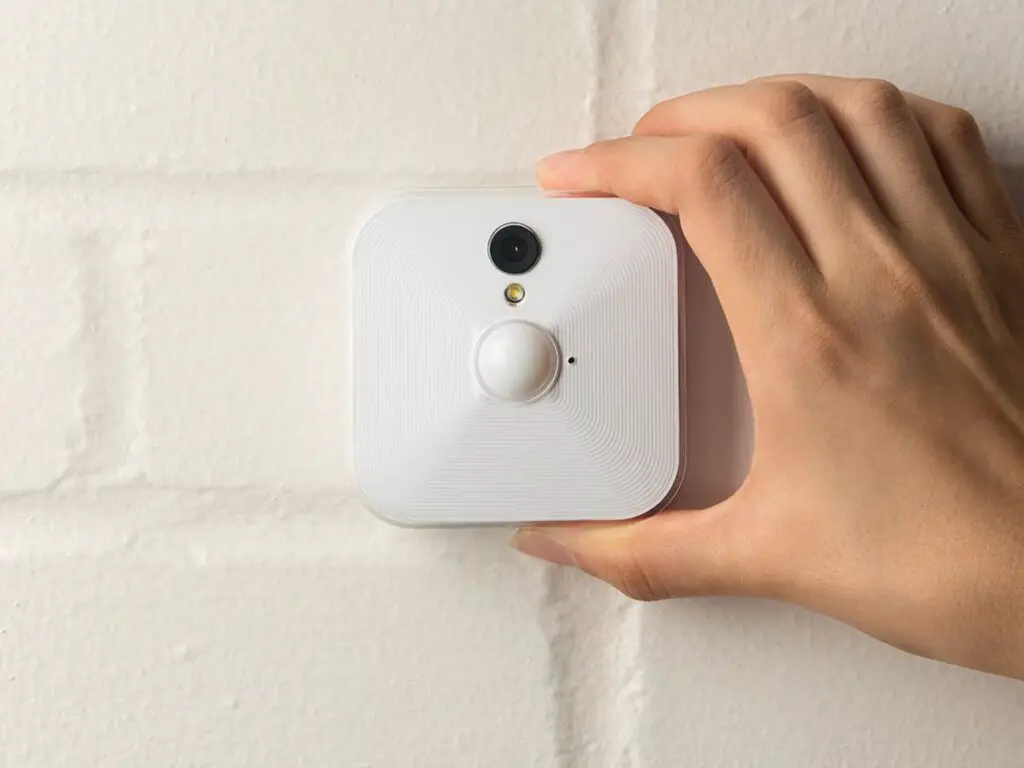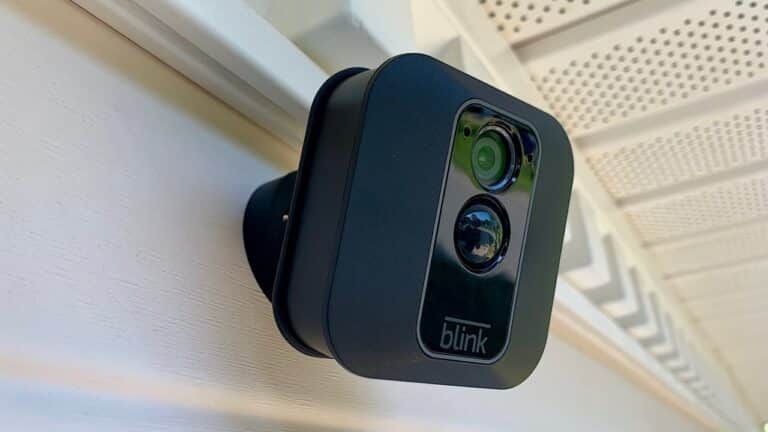Introduction
How to turn on the motion sensor on a Blink camera: Much progress has been made in the area of home security systems thanks to advances in technology. One of these new ideas is the motion monitor that can be found in cameras like the Blink Camera. Motion sensors are very important for keeping your home safe and secure because they can sense movement and set off alarms or recordings. Anyone who just bought a Blink Camera and wants to know how to turn on the motion monitor will find this guide helpful.
Activating the motion sensor on your Blink Camera involves a few simple steps that can be easily followed. First and foremost, ensure that your camera is properly installed and connected to the Blink sync module. Once this is confirmed, you can proceed to the Blink mobile app, available for both iOS and Android devices. From there, you can adjust various parameters such as motion sensitivity, detection zones, and the duration of recordings.
Higher sensitivity settings may result in more frequent alerts, while lower settings may miss certain movements. Adjusting the detection zones allows you to focus the sensor’s attention on specific areas, minimizing false alarms caused by unrelated activities. By activating the motion sensor on your Blink Camera, you enhance the overall security of your home and gain peace of mind knowing that any unusual movement will be promptly detected and recorded.

Why is my blink camera not sensing motion?
To improve your Blink motion detection, try adjusting the sensitivity settings of the camera, ensuring that the camera is positioned correctly and has a clear line of sight, and avoid placing the camera in areas with high levels of activity or movement, such as near trees or plants that may sway in the wind.
If your Blink camera is not sensing motion, there could be several possible reasons for this issue. First, ensure that the camera is properly positioned and aimed in the direction where you expect motion to occur. Check if there are any obstacles, such as trees, walls, or other objects that might be blocking the camera’s view. Clearing the line of sight may help improve motion detection. Another factor to consider is the camera’s sensitivity settings.
You can change how sensitive your Blink camera is to movements depending on the model. If it is set too low, the camera might not be able to pick up on small moves. On the other hand, if the sensitivity is set too high, small changes in the surroundings could cause fake alarms. Play around with different levels of awareness to find the best one for your needs. Also, make sure that the batteries in the camera are fully charged. Low charge levels can make some features less useful, like motion sensing. If you need to, you can replace or charge the cells.
Is Blink camera motion activated?
Once your system is Armed, any motion detected by your cameras will send a notification to your mobile device. Depending if you are either subscribed to a Blink Plan or using Local Storage, a motion clip is recorded to the Clips section of the app.
Yes, Blink cameras are motion activated. One of the key features of Blink cameras is their ability to detect motion and trigger recording or alerts. When the camera detects movement within its field of view, it will start recording a video clip and send notifications to your connected devices, such as smartphones or tablets.
Passive infrared (PIR) sensors in blink cameras pick up on changes in heat patterns, which lets them effectively identify motion. The PIR sensor picks up on changes in heat when an item or person enters the camera’s monitoring zone. This sets off the camera’s recording function. This motion-activated feature is meant to save battery life and storage space by only recording video when there is action.
Blink cameras also have motion recognition settings that can be changed. Users can change the level of awareness to make sure accurate recognition based on their needs and the space where they are. This gives you the freedom to fine-tune how the camera reacts to motion, so you can avoid fake alarms and make sure that important events are recorded.
How do I change the motion sensitivity on my Blink camera?
Settings above the camera thumbnail and then Motion Settings. Then select Motion Sensitivity and move the slider two or three points to the left towards L, for Low. Tap Save to save this setting and walk out of the frame of view of this camera.
To change the motion sensitivity on your Blink camera, you can follow these general steps. Please note that the specific instructions may vary slightly depending on the model and version of your Blink camera, so it’s always best to consult the official Blink documentation or contact their customer support for precise guidance.
Open the Blink app: Launch the Blink app on your smartphone or tablet. Ensure that your device is connected to the same Wi-Fi network as your Blink camera.
Select the camera: Tap on the camera device for which you want to adjust the motion sensitivity. This will open the camera’s settings.
Access motion settings: Look for an option called “Motion Settings” or “Motion Detection” within the camera’s settings menu. Tap on it to access the motion sensitivity controls.
Adjust motion sensitivity: A slider or numerical scale should be available. Adjust the sensitivity slider or input a new value to suit your tastes. Higher sensitivity catches more motion, whereas lower sensitivity reduces false alarms.
Test and save changes: After adjusting the sensitivity, you can perform a test by walking in front of the camera to see if the motion detection suits your requirements. If necessary, fine-tune the sensitivity level until you achieve the desired results. Finally, save the changes.
Does Blink only record when motion is detected?
Whether a Blink camera is recording or not depends on the mode it is set to. For example, if you have the camera set to Motion Detection mode, it will only record when it detects motion. If you have it set to Live View mode, it will not record at all.
Yes, Blink cameras are designed to record and capture video clips only when motion is detected. This feature helps conserve battery life, storage space, and allows for efficient management of recorded footage.
When Blink cameras detect motion, they start recording. The camera records a video clip, usually a few seconds to several minutes long, depending on your settings. Motion-activated recording captures essential events and activities rather than boring film.
Blink cameras utilize passive infrared (PIR) sensors to detect changes in heat signatures caused by movement. This technology enables them to differentiate between static scenes and motion, reducing false alarms and unnecessary recordings. By focusing on motion-triggered recording, Blink cameras provide an effective and reliable means of home security and surveillance.
Why won’t my Blink camera detect motion?
The most common reason a Blink camera doesn’t detect motion is that motion detection is not enabled or the camera is not armed in the Blink camera settings. Other reasons include low sensitivity settings, activity zones being turned on, wrong IR settings, and exceeding the maximum range.
If your Blink camera is not detecting motion, there could be several potential reasons for this issue. Here are some common troubleshooting steps to help identify and resolve the problem:
Check camera placement: Ensure that the camera is positioned correctly and aimed in the direction where motion is expected. Clear any obstructions that may be blocking the camera’s field of view, such as branches, furniture, or other objects.
Adjust motion sensitivity: Review the camera’s motion sensitivity settings. If the sensitivity level is set too low, the camera may not detect subtle movements. Increase the sensitivity level and test to see if it improves motion detection. However, be cautious not to set it too high, as it may result in false alarms triggered by environmental changes.
Battery level: Check the battery level of your Blink camera. If the batteries are low, it may affect the camera’s functionality, including motion detection. Replace or recharge the batteries as needed.
Firmware updates: Ensure that your Blink camera has the latest firmware installed. Firmware updates often include improvements and bug fixes, including enhancements to motion detection. Check for any available updates and install them if necessary.
Connectivity issues: Make sure that your Blink camera is properly connected to the Wi-Fi network. Poor or intermittent connectivity can affect the camera’s ability to detect motion. Check your network connection and consider relocating the camera or using a Wi-Fi extender if needed.

How do I turn on motion sensor on blink camera?
You can also enable or disable Motion Detection within Device Settings. Go to Device Settings and then tap Motion Settings. The first setting is Motion Detection. The Motion Detection setting allows you to change your camera’s motion detection without having to Arm your system.
To turn on the motion sensor on your Blink camera, follow these general steps. Please note that the exact process may vary slightly depending on the model and version of your Blink camera, so it’s always best to refer to the official Blink documentation or contact their customer support for specific instructions.
Open the Blink app: Launch the Blink app on your smartphone or tablet. Make sure your device is connected to the same Wi-Fi network as your Blink camera.
Select the camera: Tap on the camera device for which you want to activate the motion sensor. This will open the camera’s settings.
Enable motion detection: Look for an option called “Motion Detection,” “Motion Sensor,” or similar phrasing within the camera’s settings menu. Toggle the switch or check the box next to the motion detection option to turn it on.
Adjust sensitivity (optional): Depending on your Blink camera model, you may have the option to adjust the motion sensitivity level. If available, you can customize the sensitivity to match your preferences and the environment where the camera is installed. This step allows you to fine-tune the camera’s response to motion.
Save changes: Once you have enabled the motion sensor and adjusted the sensitivity (if applicable), save the changes by tapping on the appropriate button or icon within the app.
Are Blink cameras only motion activated?
Blink cameras are not always recording. They use motion detection to trigger recording, and stop when the motion stops or the maximum recording time is reached. However, users can manually start a live video stream from the camera at any time using the “Live View” feature.
Yes, Blink cameras are primarily known for being motion-activated. Motion detection is one of the core features of Blink cameras, designed to capture video clips or trigger alerts specifically when motion is detected within their field of view.
Blink cameras detect movement-induced heat signature changes using passive infrared (PIR) sensors. The camera records footage when the PIR sensor senses motion. This motion-activated feature is multipurpose. It saves battery life by just recording when needed, decreases storage consumption by removing continuous film, and delivers actionable footage.
The Blink app and associated devices offer options to manually activate the camera, such as initiating a live view or taking a snapshot. These features allow users to have more control over their Blink cameras and capture specific moments on demand.
How can I test if the motion sensor is working correctly?
To test if the motion sensor on your Blink camera is working correctly, you can simply walk in front of the camera’s field of view and observe if it triggers a recording or captures a snapshot. You can also review the camera’s event history in the Blink app to see if any motion events were recorded.
To test if the motion sensor of your Blink camera is working correctly, you can follow these steps:
Position yourself in front of the camera
Stand or move within the camera’s field of view, ensuring that you are within the expected range and angle of detection.
Observe the camera’s LED indicator
Most Blink cameras have an LED indicator that illuminates or changes color when motion is detected. Watch for any changes in the LED’s behavior as you move. If the LED lights up or blinks when you’re in front of the camera, it indicates that the motion sensor is detecting your movement.
Check for recording or notifications
Monitor your smartphone or tablet connected to the Blink camera for any notifications or recorded video clips. If the motion sensor is working correctly, you should receive alerts or see recorded footage when the camera detects motion.
Review the captured footage
After the test, review the recorded clips in the Blink app or on your Blink Sync Module if applicable. Ensure that the recorded footage captures your movement accurately and reflects the expected behavior of the motion sensor.

Conclusion
Activating the motion sensor on your Blink Camera is a straightforward process that significantly enhances the security of your home. By following the steps outlined in this guide, you can ensure that your camera detects and records any suspicious movement effectively. The ability to adjust motion sensitivity and detection zones gives you control over the camera’s performance. Experimenting with these settings allows you to find the optimal configuration for your specific environment, reducing false alarms while capturing important events.
Once the motion sensor is activated, you can rely on the Blink Camera to promptly alert you of any unusual activity. Whether you are at home or away, this feature provides an extra layer of security and peace of mind. With the Blink mobile app’s intuitive interface, you can easily access and customize the motion detection settings for your camera. The app’s compatibility with both iOS and Android devices ensures that you can manage and monitor your camera from anywhere, at any time.
By utilizing the motion sensor feature, you are taking a proactive step towards safeguarding your home and loved ones. The Blink Camera, with its reliable detecting motion detection capabilities, becomes a powerful tool in deterring potential intruders and capturing valuable evidence in case of an incident. By following the simple instructions provided in this guide, you can unleash the full potential of your Blink Camera and enjoy a heightened sense of safety within your home.

